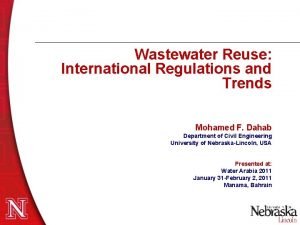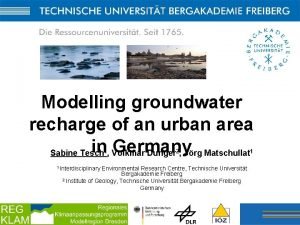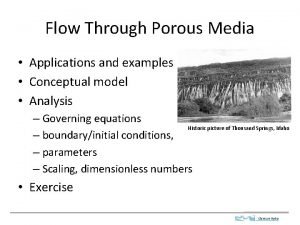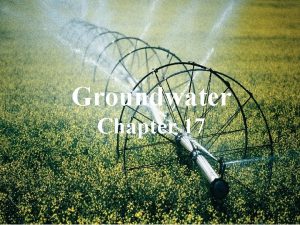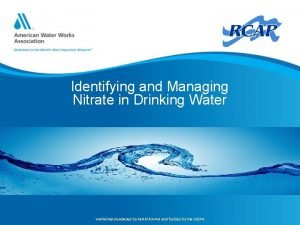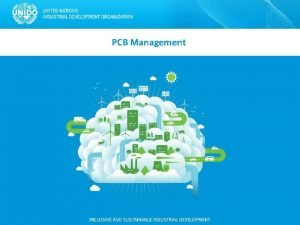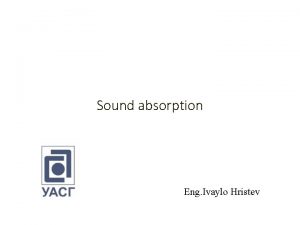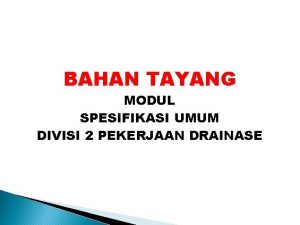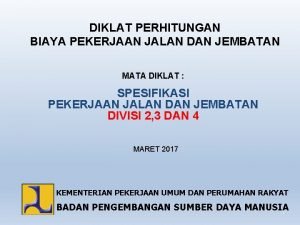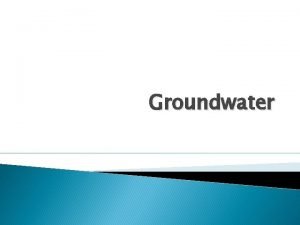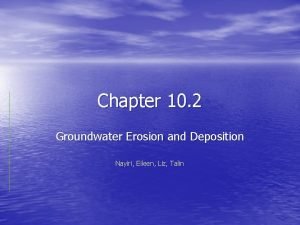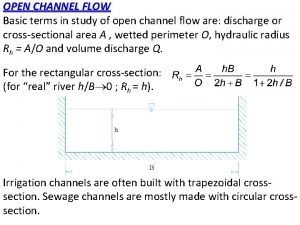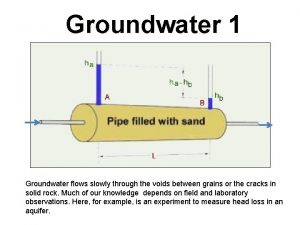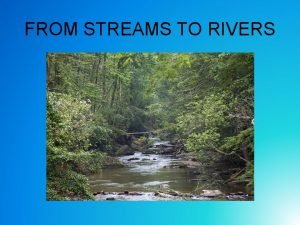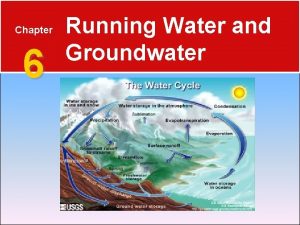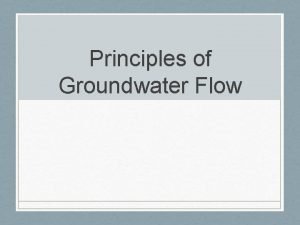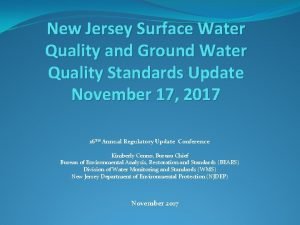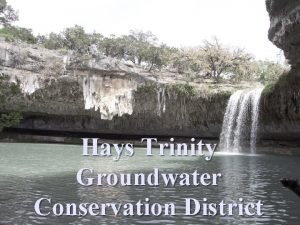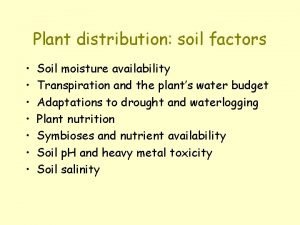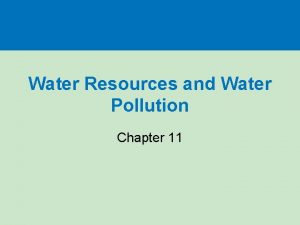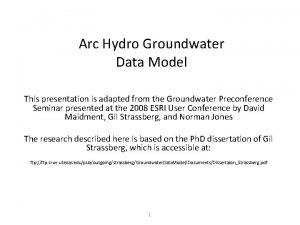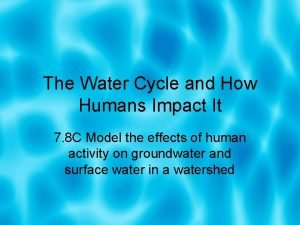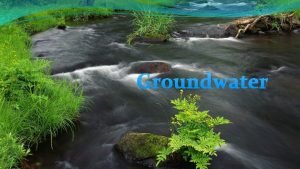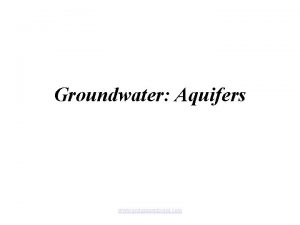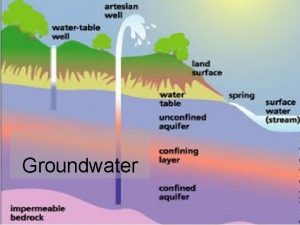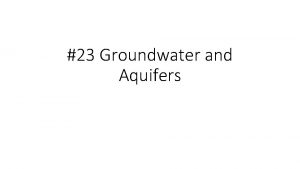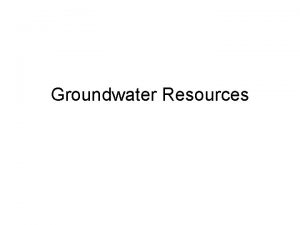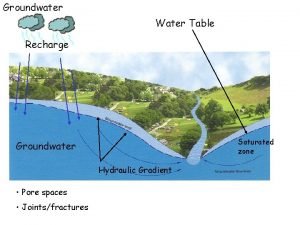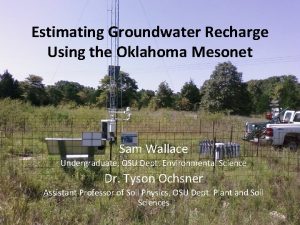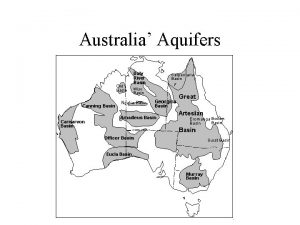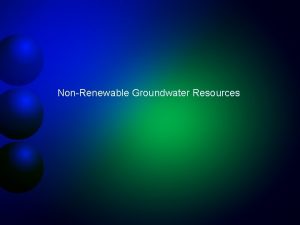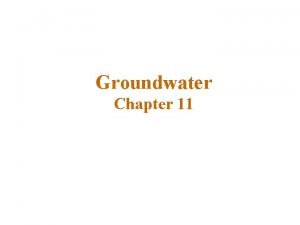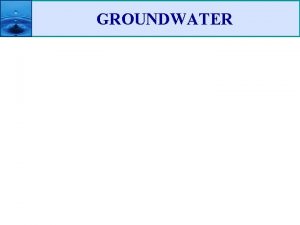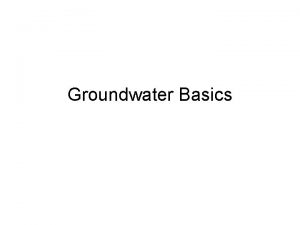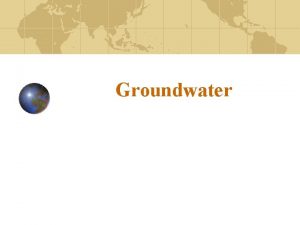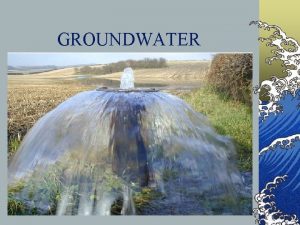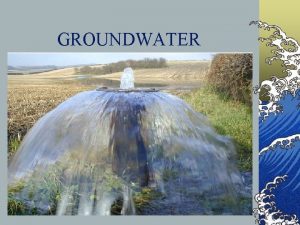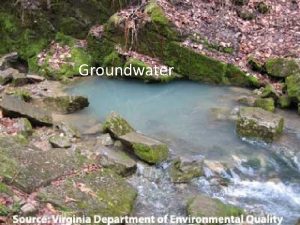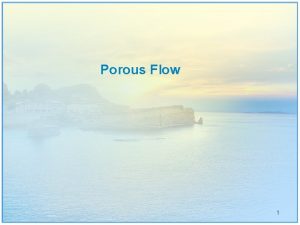Estimating Groundwater Recharge in Porous Media Aquifers in


































- Slides: 34

Estimating Groundwater Recharge in Porous Media Aquifers in Texas Bridget Scanlon Kelley Keese Robert Reedy Bureau of Economic Geology Jackson School of Geosciences Univ. of Texas at Austin

Purpose and Scope Estimate recharge rates for major aquifers (porous media) in Texas based on unsaturated flow modeling.

Outline • Methods – Study design – Model description – Input data • Results • Conclusions

Modeled Study Areas

Different Modeling Scenarios Assess relative importance of climate, soils, and vegetation on simulated recharge 1. Monolithic sand profile, no vegetation – effect of climate on recharge 2. Monolithic sand profile + vegetation – effect of vegetation on recharge 3. Layered soil profile, no vegetation – effect of soil layering on recharge 4. Layered soil profile + vegetation – most realistic case

Outline • Methods – Study design – Model description – Input data • Results • Conclusions

Model • UNSAT-H code (1 -D finite difference, PNNL) • 5 m profile • Boundary conditions: – upper boundary condition: daily weather 1961 – 1990 – lower boundary condition: free drainage • Initial conditions • Model output: – recharge, runoff, ET, water storage change – pressure and water content

Water Balance Equation R = P – ET – R 0 – DS R = recharge P = precipitation ET = evapotranspiration R 0 = runoff DS = change in soil water storage

Outline • Methods – Study design – Model description – Input data • Results • Conclusions

Average Annual Precipitation Map

1961 -1990 Average Annual Precipitation and PET for Selected Weather Stations

Average Soil Profile Clay Content (STATSGO)

Online Soils Databases and Pedotransfer Functions SSURGO (Soil Survey Geographic) database (1: 24, 000 scale) Similar soils data to STATSGO + water retention points at -3. 3 and 150 m. Pedotransfer function: transforms available soils data into hydraulic parameters (K(q), h(q)) Rosetta neural network Input: Sand, silt, and clay percentages, bulk density and water retention at -3 m head and -150 m head Database: water retention h(q) and saturated hydraulic conductivity (Ks) Output: water retention functions and saturated hydraulic conductivity

Distribution of Dominant Vegetation Types in Texas

Vegetation Parameters • Type of vegetation shrubs, grasses, crops, trees • Fractional vegetation coverage • Leaf Area Index (LAI) one sided green leaf area per unit ground area in broadleaf canopies • Root depth • Root length density

Outline • Methods – Study design – Model description – Input data • Results • Conclusions

Different Modeling Scenarios Assess relative importance of climate, soils, and vegetation on simulated recharge 1. Monolithic sand profile, no vegetation – effect of climate on recharge 2. Monolithic sand profile + vegetation – effect of vegetation on recharge 3. Layered soil profile, no vegetation – effect of soil layering on recharge 4. Layered soil profile + vegetation – most realistic case

Relationships Between Average Annual Precipitation and Simulated Area-Weighted Average Annual Recharge (1961 – 1990) R = 1. 0

Map of Recharge based on Nonvegetated Monolithic Sand Scenario 25% of P 61% of P

Different Modeling Scenarios Assess relative importance of climate, soils, and vegetation on simulated recharge 1. Monolithic sand profile, no vegetation – effect of climate on recharge 2. Monolithic sand profile + vegetation – effect of vegetation on recharge 3. Layered soil profile, no vegetation – effect of soil layering on recharge 4. Layered soil profile + vegetation – most realistic case

Relationships Between Average Annual Precipitation and Simulated Area-Weighted Average Annual Recharge (1961 – 1990) R = 0. 96

Variations of Recharge with different Vegetation Covers within one Simulated Site, Bastrop County Soil Profiles: sand, Pa. E, Tf. B, Afc

Vegetated Monolithic Sand Profile 0% of P 32% of P

Different Modeling Scenarios Assess relative importance of climate, soils, and vegetation on simulated recharge 1. Monolithic sand profile, no vegetation – effect of climate on recharge 2. Monolithic sand profile + vegetation – effect of vegetation on recharge 3. Layered soil profile, no vegetation – effect of soil layering on recharge 4. Layered soil profile + vegetation – most realistic case

Relationships Between Average Annual Precipitation and Simulated Area-Weighted Average Annual Recharge (1961 – 1990) R=0. 79

Variations of Recharge with different Soil Profiles within one Simulated Site, Bastrop County Soil Profiles: sand, Pa. E, Tf. B, Afc

Average Soil Profile Clay Content (STATSGO) Simulated Runoff 260 mm/yr 170 mm/yr 150 mm/yr 50, 25 mm/yr 10 mm/yr 0. 1 mm/yr 150 mm/yr 315 mm/yr 430 mm/yr 30 mm/yr

Simulated Recharge Distribution based on Nonvegetated Layered Soil Profiles 4% P 26% P

Different Modeling Scenarios Assess relative importance of climate, soils, and vegetation on simulated recharge 1. Monolithic sand profile, no vegetation – effect of climate on recharge 2. Monolithic sand profile + vegetation – effect of vegetation on recharge 3. Layered soil profile, no vegetation – effect of soil layering on recharge 4. Layered soil profile + vegetation – most realistic case

Relationships Between Average Annual Precipitation and Simulated Area-Weighted Average Annual Recharge (1961 – 1990) R=0. 95

Map of Simulated Recharge based on the Power Law Relationship Power model Reduction Factor 11 – 109 0. 2% - 7% P Reduction Factor 2– 7 2% - 10% P

Simulated Average Annual Drainage (mm/yr) Sensitivity of Recharge to Variations in Leaf Area Index, Root Depth, Root Length Density, and Bare Area 1 - 4 Represent Different Soil Profiles

Summary/Conclusions • Monolithic sand profile – 54 mm/yr in W Texas to 720 mm/yr in E Texas – represents 25% to 61% of precipitation • Vegetated sand profile – 0 mm/yr in W Texas to 377 mm/yr in E Texas – represents 0% to 32% of precipitation • Layered soil profile – 18 mm/yr in W Texas to 226 mm/yr in E Texas – represents 4% to 26% of precipitation • Layered soil profiles + vegetation – 0. 1 mm/yr in W Texas to 114 mm/yr in E Texas – represents 0. 1% to 10% of precipitation

Summary/Conclusions • Monolithic sand profile – 54 mm/yr in W Texas to 720 mm/yr in E Texas – represents 25% to 61% of precipitation • Vegetated sand profile – 0 mm/yr in W Texas to 377 mm/yr in E Texas – represents 0% to 32% of precipitation • Layered soil profile – 18 mm/yr in W Texas to 226 mm/yr in E Texas – represents 4% to 26% of precipitation • Layered soil profiles + vegetation – 0. 1 mm/yr in W Texas to 114 mm/yr in E Texas – represents 0. 1% to 10% of precipitation
 Groundwater recharge pdf
Groundwater recharge pdf Iöz
Iöz Free and porous media flow comsol
Free and porous media flow comsol Porous media examples
Porous media examples The importance of groundwater
The importance of groundwater What is an aquifer?
What is an aquifer? Ucla fau
Ucla fau Zing tv recharge maharashtra
Zing tv recharge maharashtra Aquifers and springs
Aquifers and springs Us aquifers
Us aquifers Objective of tig welding
Objective of tig welding Porous material
Porous material Sound absorption
Sound absorption Bahan drainase porous atau penyaring (filter)
Bahan drainase porous atau penyaring (filter) Shaud tavakoli
Shaud tavakoli Bahan drainase porous atau penyaring (filter)
Bahan drainase porous atau penyaring (filter) Water table
Water table Groundwater erosion and deposition
Groundwater erosion and deposition Groundwater pollution
Groundwater pollution Groundwater flow definition
Groundwater flow definition Groundwater
Groundwater How does groundwater rejoin the water cycle
How does groundwater rejoin the water cycle Chapter 6 running water and groundwater
Chapter 6 running water and groundwater Total head equation
Total head equation Njdep gwqs
Njdep gwqs Lower trinity groundwater conservation district
Lower trinity groundwater conservation district Groundwater system
Groundwater system Groundwater table
Groundwater table Septic tank contamination groundwater
Septic tank contamination groundwater Measures to reduce water pollution
Measures to reduce water pollution Arc hydro groundwater
Arc hydro groundwater Piezometer groundwater
Piezometer groundwater Human impact on groundwater
Human impact on groundwater Permeability of rocks
Permeability of rocks Where can you find groundwater brainpop
Where can you find groundwater brainpop
